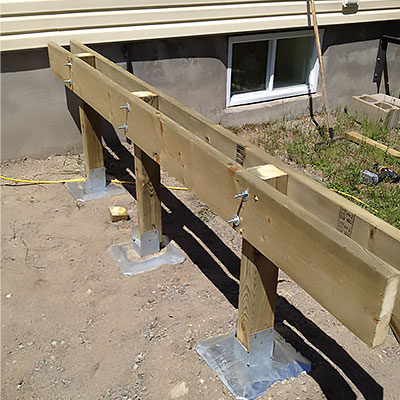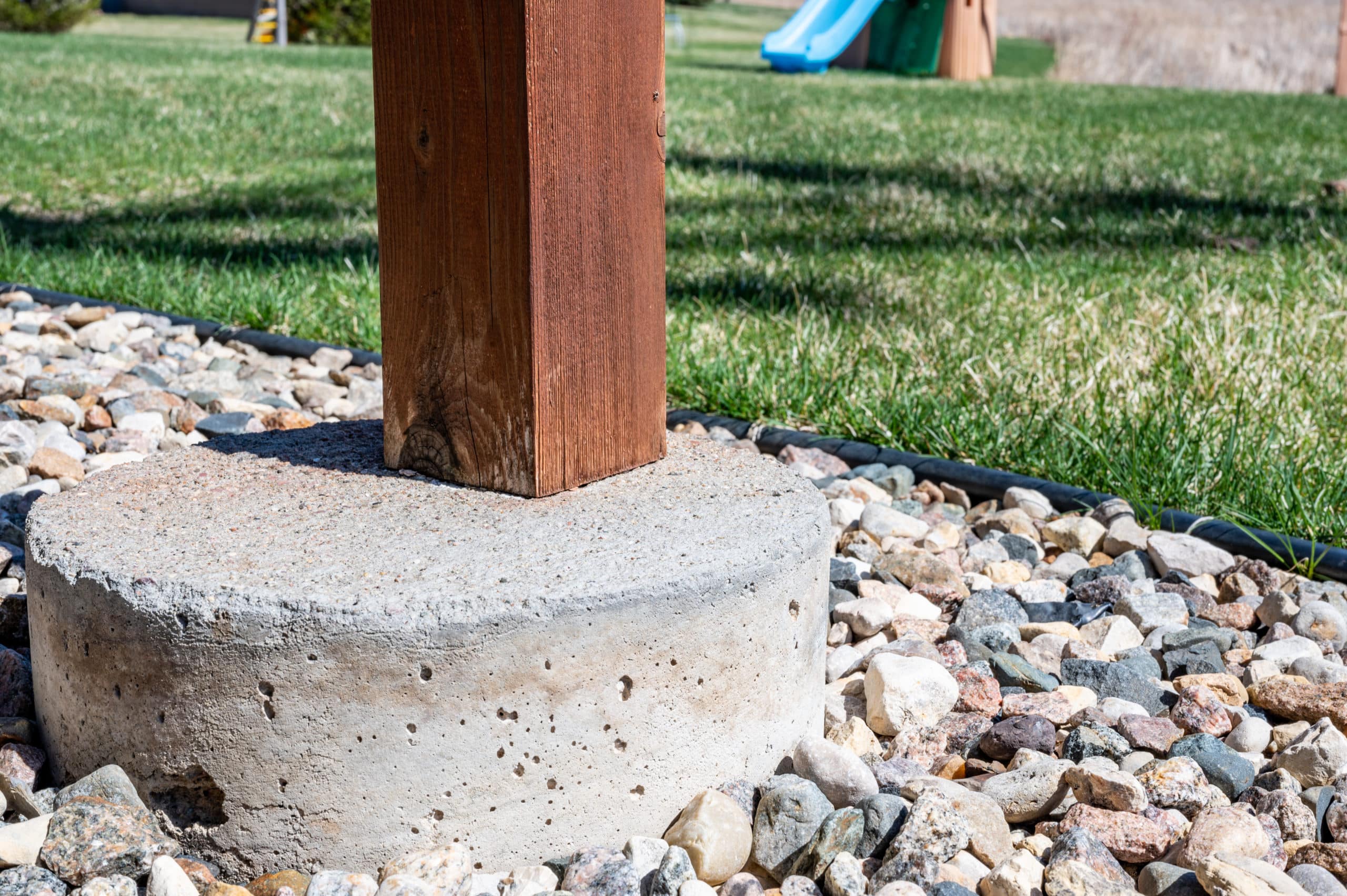Safeguard Structures, Lasting Impressions: Mastering the Art of Deck Footings Installation
Picking the Right Deck Footings for Stability and Resilience
The longevity and security of your deck depend greatly on the kind of footings you select, as they supply the essential support and security to hold up against the test of time. In this conversation, we will check out the different kinds of deck footings, consider the crucial factors to evaluate when making a decision, and dig right into the pros and cons of various alternatives.
Types of Deck Footings
There are a number of sorts of deck grounds that can be used, each offering special benefits and factors to consider. One usual sort of footing is the concrete pier footing. These footings consist of a cylindrical hole filled up with concrete, which provides a solid foundation for the deck messages. Concrete pier footings are fairly easy to mount and provide exceptional stability, making them a popular choice for numerous deck jobs.
These footings are installed by screwing them into the ground, which develops a safe and secure foundation for the deck. They also permit for simple modification and progressing of the deck if needed.
Conversely, some building contractors decide for precast concrete grounds. These footings are made of long lasting concrete and be available in various sizes and shapes to suit different deck designs. Precast concrete grounds are practical to install and give a steady base for the deck structure.
Lastly, another choice is the post-in-anchor ground system. This sort of ground involves driving a metal support into the ground and attaching it to the deck blog post. It offers versatility in terms of positioning the deck blog posts and appropriates for decks with lightweight frameworks.
When picking the best kind of deck footing, it is vital to think about elements such as dirt conditions, deck tons, and regional structure codes (Deck Footings). Consulting with a professional specialist or architectural engineer can help guarantee the ideal footing is chosen for a risk-free and steady deck
Elements to Take Into Consideration When Choosing Footings
When selecting the proper grounds for a deck, it is essential to meticulously take into consideration various variables such as soil conditions, deck tons, and adherence to regional structure codes. These factors play a substantial function in making sure the security and durability of the deck structure.
One of the key elements to think about is the soil conditions. The type of soil on which the deck will be developed identifies the kind of footings needed. For example, decks improved loosened or sandy soils may need deeper footings to provide adequate assistance and stop settling. On the other hand, decks improved clay or large dirts might need footings that can accommodate the dirt's propensity to broaden and contract.
Another crucial variable is the deck lots. The weight of the deck, consisting of the materials used and any kind of prospective live tons such as furniture or gatherings, have to be taken into consideration when selecting grounds. The footings should be designed to birth the weight of the deck and distribute it equally to stop any kind of architectural concerns or failures.
Last but not least, adherence to regional building regulations is critical. Building codes differ from region to area, and it is necessary to abide by the details needs set by the neighborhood authorities. Deck Footings. These codes guarantee that the deck is constructed safely and fulfills the necessary requirements for structural honesty and load-bearing capability
Concrete Grounds: Disadvantages and pros

Concrete footings offer several advantages and disadvantages when used as the structure for a deck. On the positive side, concrete footings offer outstanding stability and sturdiness.
One more benefit of concrete footings is their flexibility. They can be poured into various forms and dimensions to suit numerous deck styles and setups. Concrete footings can be customized to fit the specific needs and requirements of the deck structure.
Nonetheless, there are likewise some drawbacks to utilizing concrete grounds. This can increase the total price of the deck task and may need expert support.

Helical Piers Vs. Sonotubes: Which Is Better?
In considering the foundation choices for a deck, the contrast in between helical piers and sonotubes is critical in determining the superior choice. Helical piers, likewise referred to as screw piles, are steel shafts with helical plates attached to them. They are turned right into the ground making use of hydraulic equipment, providing a steady and resilient structure for the deck. On the other hand, sonotubes are cylindrical kinds constructed you could check here from cardboard or fiber product that are filled up with concrete. They are put in an opening explored the ground and supply support for the deck.
When it comes to stability and sturdiness, helical piers have the upper hand. The helical plates on the piers develop a solid grip with the dirt, shifting or stopping any movement of the deck. This is specifically advantageous in locations with unsteady or shifting dirt conditions. Sonotubes, on the various other hand, depend only on the concrete filling up for stability, which might not offer the very same level of toughness and resistance.
In terms of setup, helical piers are fairly easier and faster to set up contrasted to sonotubes. The hydraulic equipment used to turn the piers right into the ground makes sure a reliable and quick procedure. Sonotubes, on the various other hand, require digging holes and pouring concrete, which can be taxing and labor-intensive.
Additionally, helical piers are a more functional choice. They can be made use of in various soil conditions and can be readjusted or enhanced if required. Sonotubes, on the other hand, might call for added assistance, such as rebar, in certain soil conditions or locations with high lots requirements.
Selecting the Right Footings for Your Deck's Dimensions
For optimal structural stability, it is necessary to meticulously pick the appropriate footings that align with the dimensions browse around these guys of your deck. The dimensions of your deck, including its elevation, size, and length, play a substantial function in determining the kind and size of footings required.
When selecting grounds for your deck, it is essential to consider the load-bearing ability of the soil. The weight of the deck, integrated with the weight of any kind of furnishings or people on it, exerts a significant pressure on the footings (Deck Footings). For that reason, it is important to select footings that can sufficiently support this weight without moving or sinking gradually.
The size and shape of the grounds must also be considered. Bigger decks with higher dimensions call for bigger footings to provide enough stability and support. The form of the footings, whether they are square or round, depends on the layout and design of the deck. Furthermore, the deepness at which the footings are set up must be established based upon the frost line in your region to prevent any heaving or changing due to freezing temperature levels.
Final Thought
In verdict, choosing the best deck footings is important for making certain security and resilience. Variables such as the kind of footings, the deck's dimensions, and the pros and cons of different options ought to be thought about.
These footings consist of a cylindrical hole filled up with concrete, which supplies a strong foundation for the deck posts. Concrete pier footings are relatively easy to install and offer outstanding stability, making them a popular selection for several deck tasks.
Precast concrete grounds are hassle-free to mount and supply a steady base for the deck framework.
It supplies adaptability in terms of placing the deck articles and is appropriate for decks with lightweight structures.
Concrete footings use next page numerous advantages and drawbacks when used as the foundation for a deck.